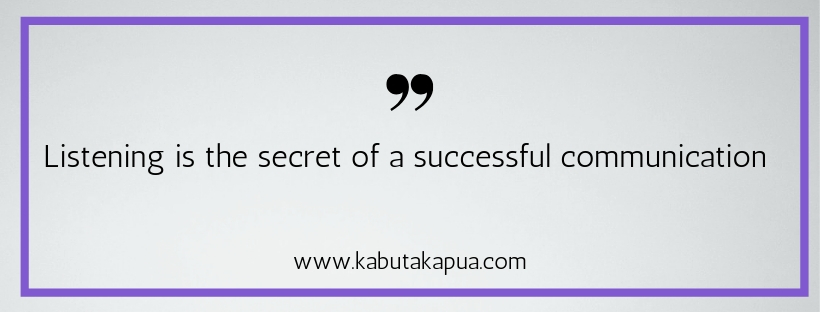To communicate or not to communicate. To listen or not to listen. It might not sound like a constant struggle, a battle. Yet, when faced with the choice of opening up ourselves or avoid deeper discussions, more often than not we decide to go for the small talk. This can lead to shallow conversations and to the loss of the pivotal ability to listen.
In my years working in the communication sector, it became very clear to me that I was more of a listener than a speaker. Don’t get me wrong, I love training people in communication, speaking in front of crowds. But I find a deeper satisfaction into listening and understanding people rather than speaking. The power of this simple yet energy-consuming action, was quite clear but I never fully processed why until I started reading books on marketing and watching TED Talks. The message was clear: listening is the secret of a successful communication and the amount of energy it requires is often underestimated.

These were pills of wisdom that came from professional listeners and advertisers. That’s why I was happily surprised to find out a toddler book can share a similar lesson. Ever read the story “Eat Your Peas†by Kes Gray and Nick Sharratt?
The story goes that a little girl, Daisy, is sitting for dinner. She eats almost all of her food, except from those little, seemingly useless, round, green peas. Daisy already knows how the evening is going to play out and as soon as her mom arrives the play starts. Her mother asks her to eat all the peas. To which invitation Daisy simply answers: “I don’t like peasâ€. In an effort to convince her, her mom starts an impossible bargain during which she promises to give the little girl all that she ever wanted and more, if only she eats her peas. Daisy doesn’t scream, doesn’t act naughty, she simply sits straight on her chair and repeats after every offer: “I don’t like themâ€. The story ends with Daisy finally trying to compromise that she’ll eat all the peas if her mom eats all of her Bruxelles sprouts. To which invitation her mom answers “I don’t like themâ€.Â
Such exchange does not sound so crazy to those who have children. We convince ourselves they need to do something because it’s good for them and interpret every negative answer as an act of protesting. However, if we started listening with less prejudices maybe we’d realise they are simply expressing their personality, flavour, character.Â
Among adults we might not try to convince each to empty our plates but the mechanism can be quite similar and the results the same: we do hear what the other is saying but we are unable to listen. The problem, says radio journalist Celeste Headlee, is that we listen to answer and not to understand. And this eventually damages every communication effort.
Refusing to listen to translates in not knowing what our customers, followers, supporters, team members are really sharing. And bear in mind that communication is a multiform activity that also takes the shape of physical actions, clothes choice, sights. We need to regain the power of the ability to listen and observe people around us to establish better human connections and professional relationships.Â
Here are some suggestions for an action plan:Â
- Despite your habits, try not to look at your mobile phone or wear earphones when travelling to work. Allow yourself to listen and observe the environment you are inÂ
- Next time you speak to someone make sure you really understand what they are trying to say. Repeat what the person said and ask them if you understand correctlyÂ
- If you are dealing with online communication, try asking a third person to read the message and see if you are sharing the meaning of it
- Be humble, be open, observe.Â
I’d like to help with your approach to communication, you can take part in one of my workshops or we can do 1-2-1 sessions
Until next time,